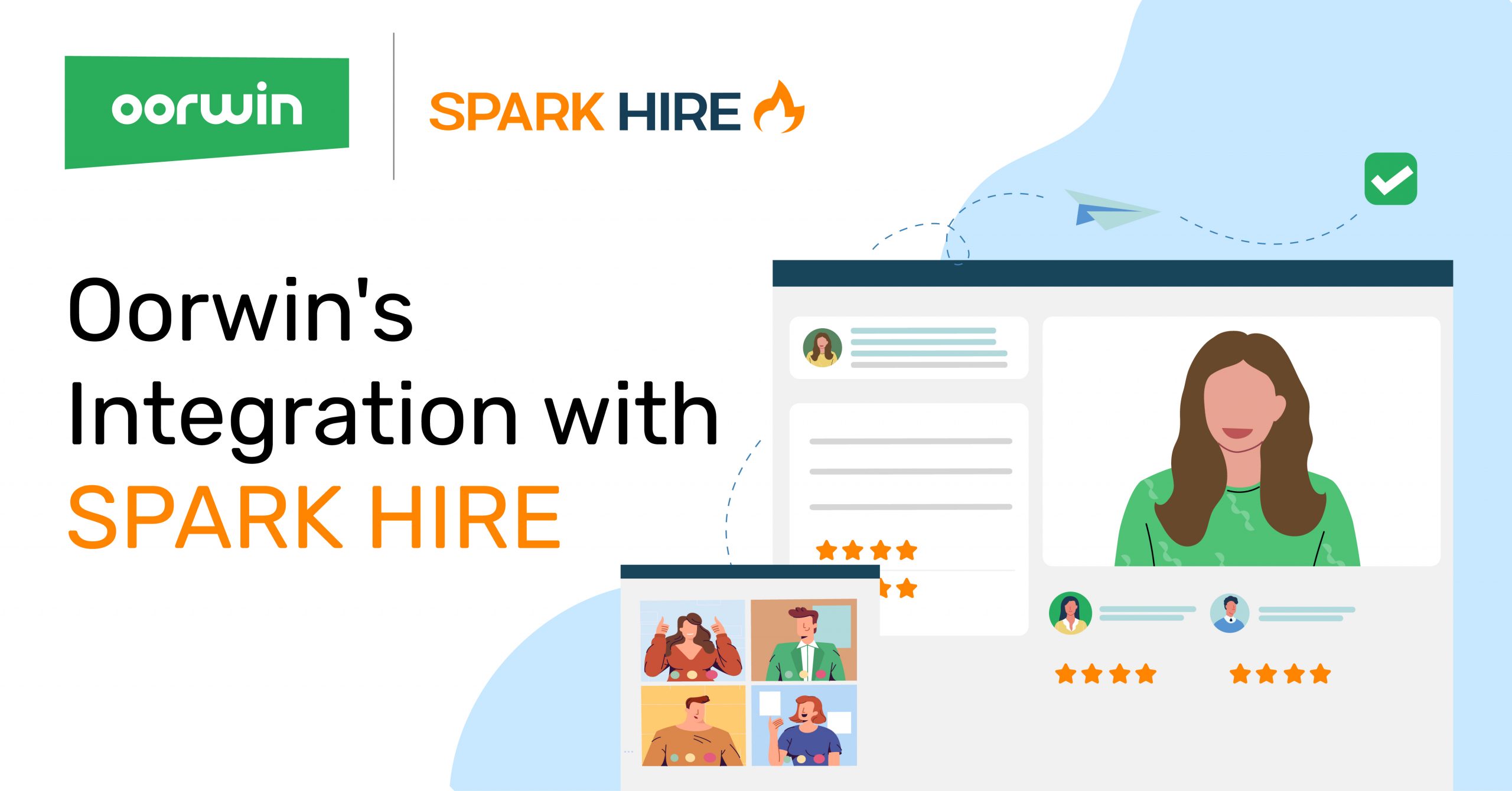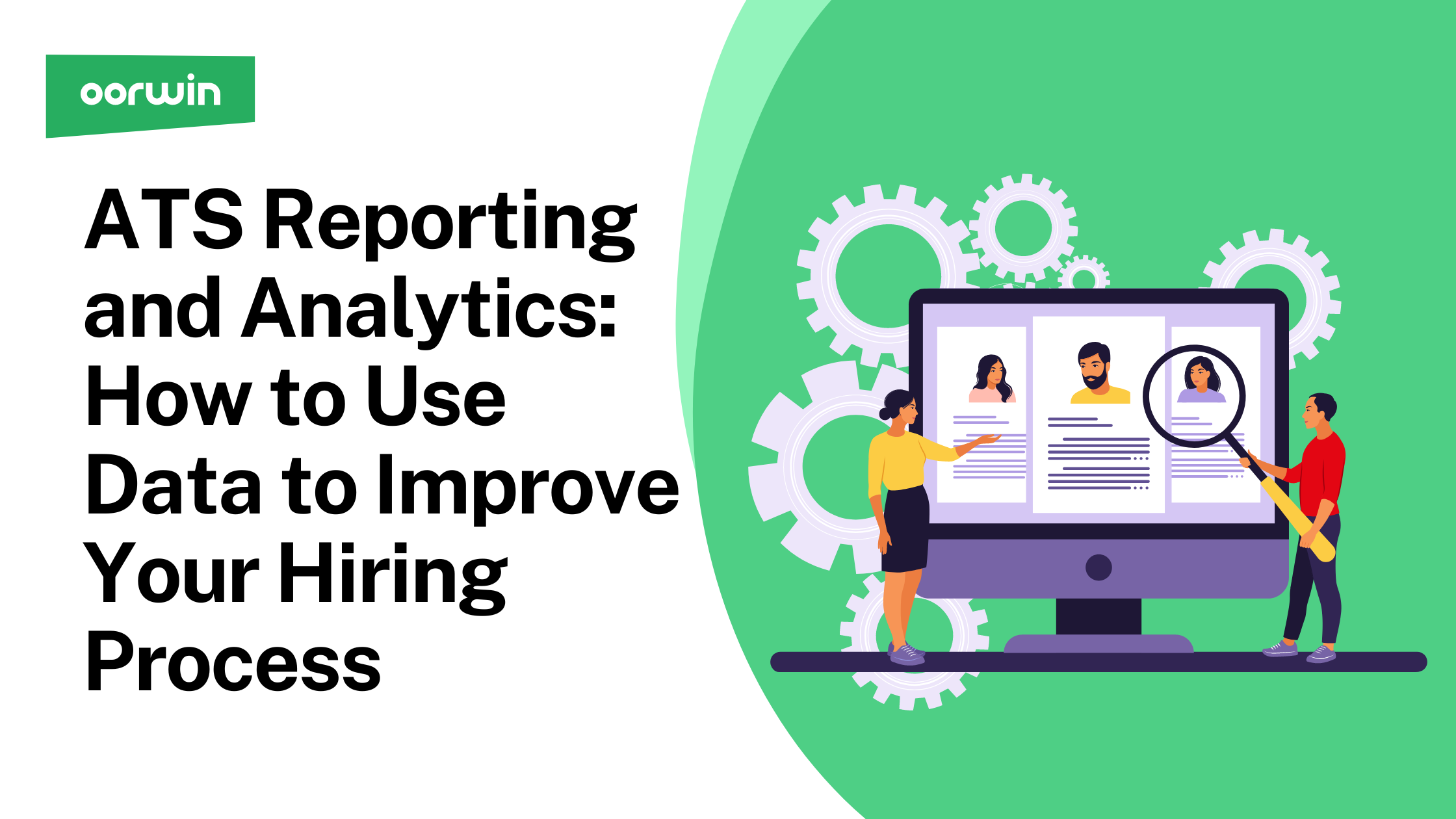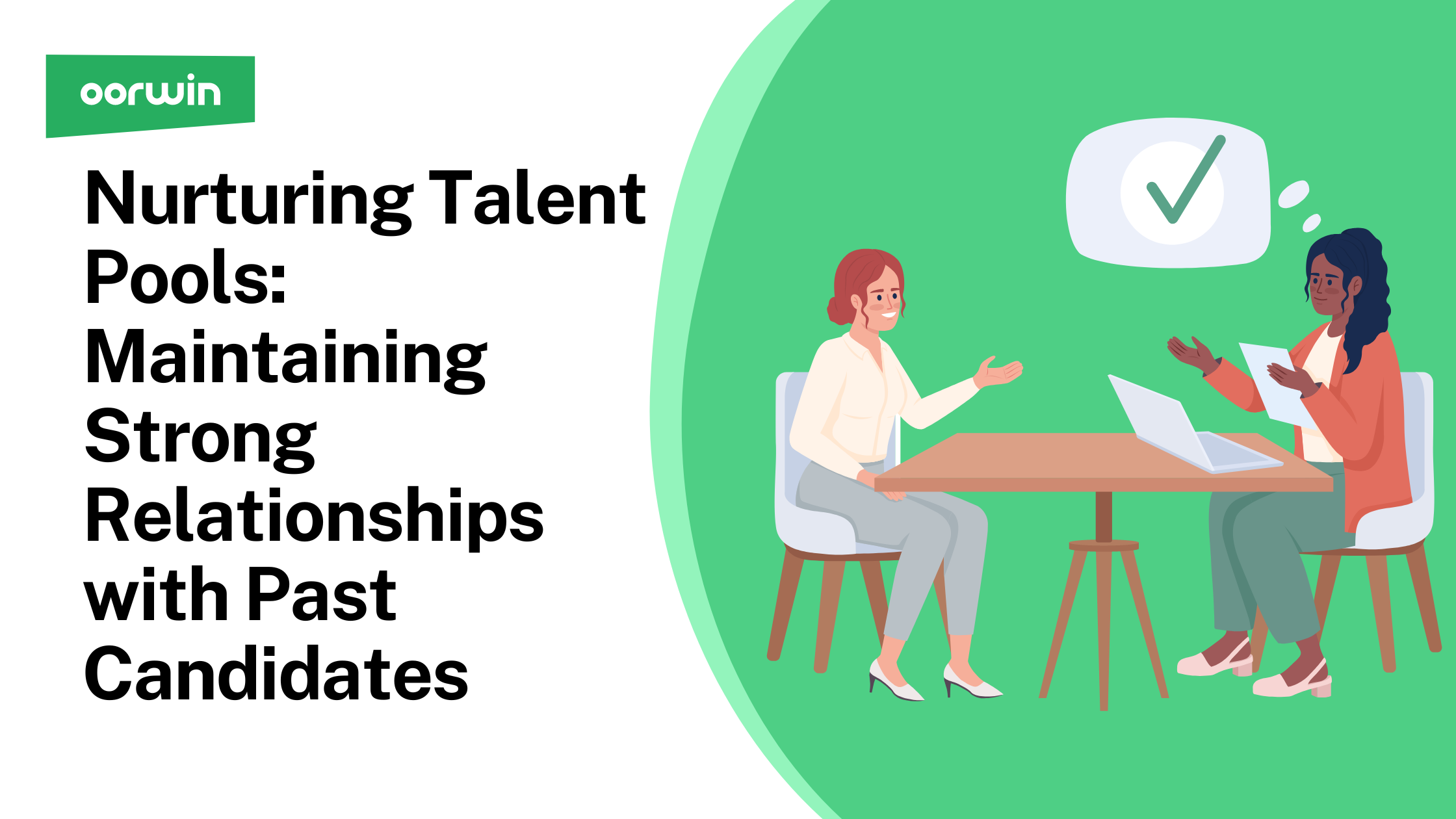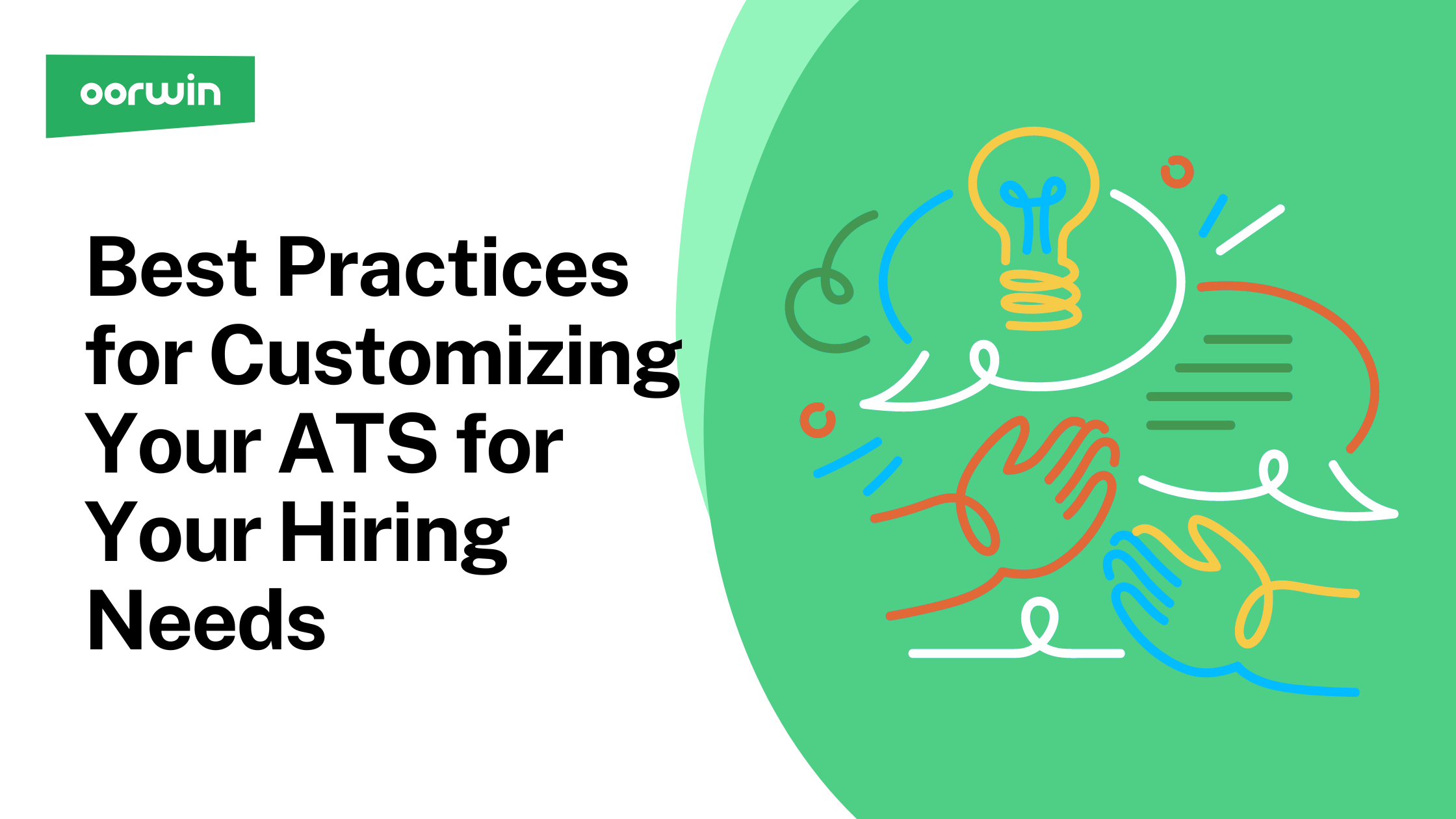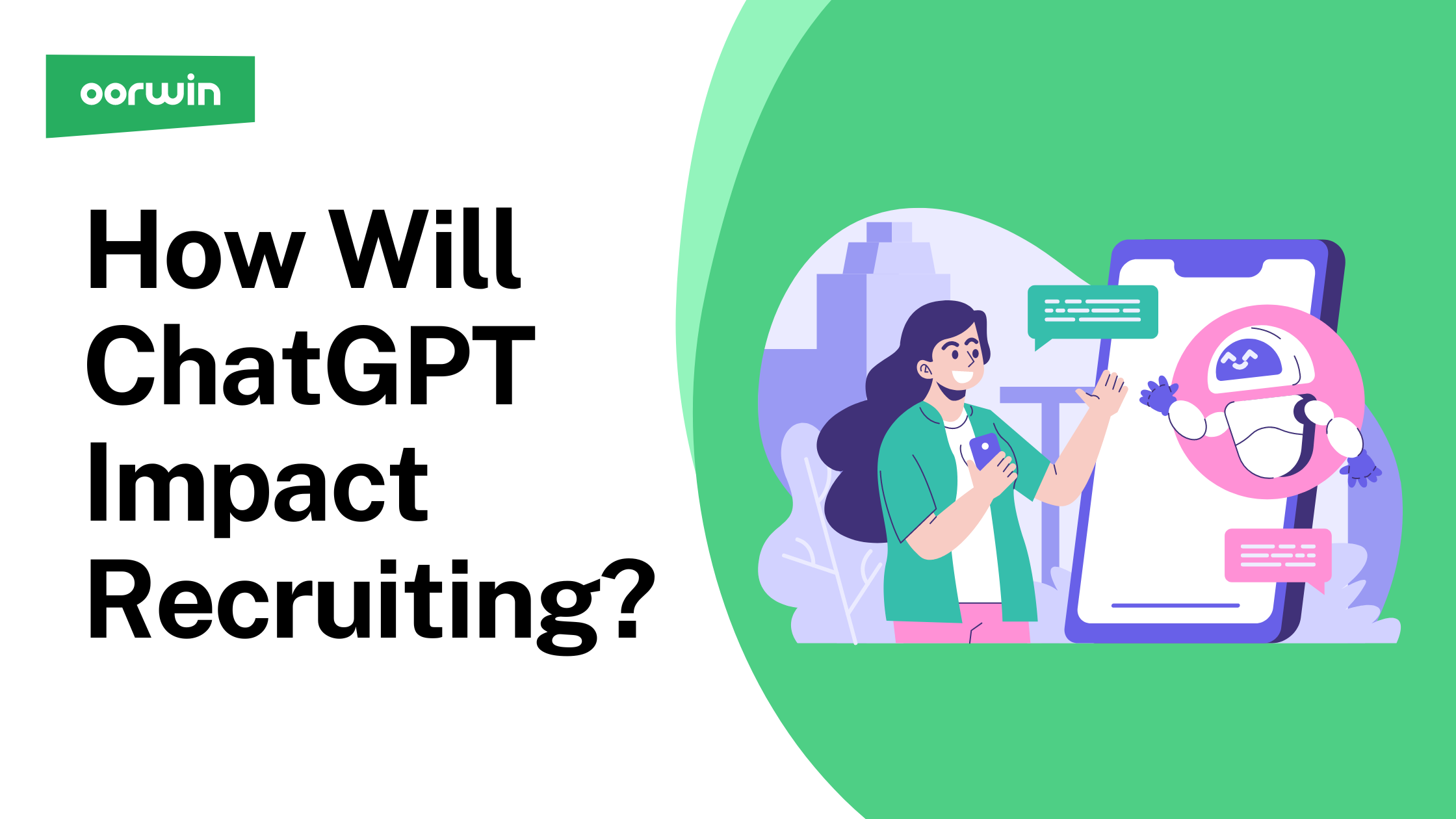Unveiling the Future: The Impact of Recruiting with ChatGPT
In the dynamic world of recruitment, artificial intelligence is proving to be a transformative force. The advent of OpenAI’s ChatGPT, a state-of-the-art language model, is particularly noteworthy. Its capability to comprehend and generate human-like text makes it a potent recruitment industry tool.
This article delves into how we can use ChatGPT for recruiting in revolutionizing recruiting processes by automating tasks, refining candidate search, enhancing user experience, and, consequently, promising an improved candidate experience. As we explore its applications, we will unveil the future of recruitment, profoundly impacted by this remarkable AI technology.
What is ChatGPT?
ChatGPT is an advanced language model developed by OpenAI, using the cutting-edge Generative Pre-trained Transformer 4 (GPT-4) architecture. It’s an artificial intelligence program that can understand and generate human-like text based on its input. The ChatGPT app and ChatGPT API are now being adopted in various industries to automate tasks, including the recruiting industry.
How Does ChatGPT Work?
The underlying technology of ChatGPT is based on machine learning, where it’s trained on a massive corpus of internet text to predict and generate human-like responses. This capability to understand and respond in a contextually relevant manner makes the ChatGPT chatbot an ideal tool in many areas, including refining candidate search in recruiting.
ChatGPT and Its Role in the Recruitment Industry
Integrating AI in recruiting is a concept that has been introduced previously. However, the entry of recruiting with ChatGPT has brought a significant shift in how recruiters approach their tasks. This advanced AI model can assist in crafting engaging job descriptions, streamlining the pre-screening process, generating interview questions, enhancing candidate communication, and analyzing vast volumes of candidate data.
Crafting Engaging Job Descriptions with ChatGPT
One critical aspect of attracting the right talent is the job description. With recruiting with chatGPT, recruiters can easily create compelling and precise job descriptions. The AI suggests improvements, avoids jargon, and ensures the language is inclusive, thus casting a wide net to attract diverse talent.
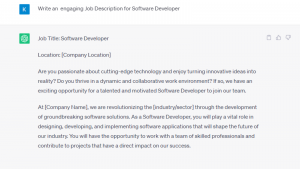
Revolutionizing the Pre-screening Process
AI in hiring can vastly improve efficiency and accuracy. By utilizing ChatGPT for recruiting, hiring managers can automate the pre-screening process. The AI can interact with candidates, assess their suitability based on their responses, and flag ideal candidates for human recruiters to follow up with. This reduces the time spent on initial screening, allowing recruiters to focus on more nuanced aspects of the recruitment process.
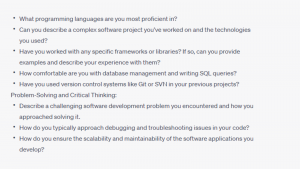
Enhancing the Recruitment Journey
In the dynamic employment landscape of today, curating an engaging and positive journey for candidates is paramount. Recruiting with ChatGPT revolutionizes this process by facilitating seamless interactions. Candidates can converse with the AI, inquire about job specifics, delve into the company culture, and receive immediate, tailored replies. This interactive dimension aids in fostering a deeper bond between the candidates and the company, thus elevating their overall recruitment journey.
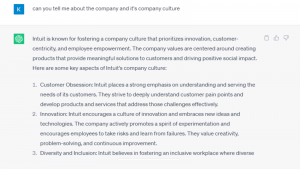
How ChatGPT Streamlines Interview Questions Generation
Creating relevant and insightful interview questions is another area where recruiting with ChatGPT shines. Using ChatGPT for recruiting can help in generating a list of targeted interview questions based on the job description and role requirements. By doing so, not only is time saved, but it also guarantees that the questions are thorough and customized to evaluate the relevant skills.
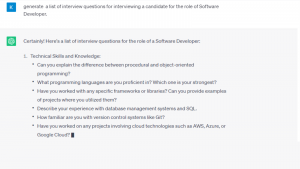
ChatGPT’s Role in Candidate Communication: Personalized Emails
Communication with candidates is a time-consuming task that requires attention to detail. Using ChatGPT for recruiting can automate this process by drafting personalized emails for different stages of the recruitment process – from initial contact to job offers. Ensuring consistent communication and recruiting with ChatGPT helps to maintain a positive candidate experience.
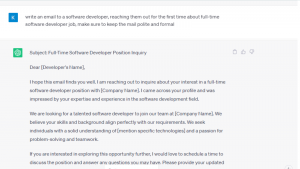
The Data Handling Power of ChatGPT: Analyzing Large Candidate Volumes
In the age of online applications, recruiters often need help with the volume of applications for each job posting. Utilizing ChatGPT for recruiting is an invaluable tool in this scenario. It can analyze large volumes of candidate data, scoring each candidate based on their qualifications and identifying those most suitable for the role.
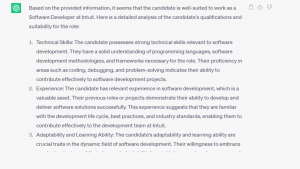
The Efficiency Quotient: Time and Cost Savings
By automating routine tasks and enhancing the efficiency of the recruitment process, recruiting with ChatGPT can help organizations save both time and money. Recruiters can focus on more complex tasks, such as candidate negotiations and strategic planning, increasing productivity and cost efficiency.
How to Use ChatGPT for Recruiting (with examples)
Consider the comprehensive range of responsibilities within your role and workplace. Now, envision the additional achievements you could attain if you had reliable assistance to handle the repetitive and time-consuming tasks of your daily routine. ChatGPT for recruiting serves as the invaluable personal assistant you’ve longed for, empowering you to complete more work efficiently.
Talent acquisition teams can seamlessly integrate ChatGPT recruiting into various aspects of their recruitment workflows. Some notable examples of how recruiting with ChatGPT can benefit the recruiting process include:
- Crafting Boolean search strings for talent sourcing.
- Acquiring a quick understanding of the intricacies of various coding languages, enabling seamless transitions between business and technical candidate searches.
- Developing a repository of strategic interview questions to share with hiring managers and interviewers.
Some Practical sample prompts you can use for ChatGPT Recruiting
- Writing a job description
Sample prompt: “Craft a comprehensive job description for a Senior Front-End Developer role, emphasizing the importance of modern web development technologies and the role’s significance within our organization. Include a clear job overview, primary responsibilities, necessary skills and qualifications, and details about the team the candidate will collaborate with.”
- Writing a job advertisement
Sample prompt: “Craft an engaging job advertisement for a Product Manager role at an innovative tech company known for its commitment to sustainability and innovation. The advertisement should feature an attention-grabbing headline, a clear job overview, primary responsibilities, essential skills and qualifications, and highlight the unique advantages of being part of our mission-driven team. Ensure the language used is inclusive and resonates with a diverse and environmentally-conscious audience.”
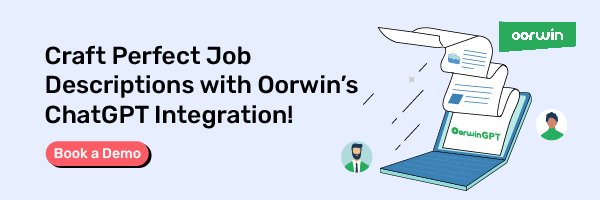
- Exploring alternative job titles for candidate sourcing.
Sample prompt: “Compile a roster of alternative job titles or positions associated with expertise in social media strategy, content creation, audience engagement, and analytics. These titles should be suitable for professionals possessing the skill set typically required for a Social Media Manager role.”
- Candidate outreach emails
Sample prompt: “Compose a customized email for candidate outreach, addressing a prospective candidate named John. John currently holds the position of Senior Graphic Designer at a prominent digital marketing agency. The email’s objective is to extend an invitation for John to explore an available position for an Art Director at our forward-thinking advertising firm. Emphasize the creative atmosphere, prospects for professional development, and our competitive benefits package. Maintain a tone that is professional while maintaining a friendly demeanor.”
- Preparing Interview Questions
Sample Prompt:” Generate a set of five technical interview inquiries tailored to assess candidates applying for a Digital Marketing Specialist role. These questions should center on evaluating the candidate’s expertise in SEO/SEM, email marketing, and social media marketing and their familiarity with marketing analytics tools.”
Essential Tips to Consider for ChatGPT Recruiting
Recruiting with ChatGPT offers numerous advantages, but it’s essential to remain vigilant regarding potential issues related to bias, data privacy, and inaccuracies in prompts and responses. Here are some key points to keep in mind:
- Validate Response Accuracy: It’s crucial to verify the accuracy of each response from ChatGPT, as there may be occasional instances where it generates incorrect information.
- Refine Responses: Enhance the quality of responses by engaging in iterative exchanges with ChatGPT. Providing follow-up prompts and additional context can provide more accurate and valuable information.
- Promote DEI: Leverage AI to advance diversity, equity, inclusion, and belonging in your recruiting efforts. Regularly review your prompts and ChatGPT responses to identify and mitigate potential biases and the risks associated with AI in recruitment.
- Maintain Human Oversight: While AI can be a valuable tool, it should never replace human decision-making. Ensure that humans are at the center of your decision-making process to minimize the potential for unintended consequences.
- Protect Confidential Information: Avoid inputting confidential information into ChatGPT, as it is an open tool subject to review by the OpenAI team.
The Way Forward: Integrating ChatGPT into Your Recruitment Process
The ever-evolving recruitment landscape necessitates constant innovation and adaptation. Traditional hiring methods, while still having their place, can be complemented and significantly enhanced by integrating AI technology like ChatGPT. As we look ahead, it is clear that AI is not just a fad but a vital tool that is here to stay, shaping the future of the recruitment industry
Recruiting with ChatGPT begins with identifying areas that would benefit from AI’s efficiency. From crafting job descriptions to maintaining candidate communication, AI can offer significant improvements.
The technical aspects of integration involving the ChatGPT API and your existing recruitment software require collaboration with your tech team or a reliable partner. Proper training for your team is essential to leverage this technology effectively.
Continuous monitoring and assessment of the AI’s performance are crucial to ensure its effectiveness and to make the necessary adjustments. Integrating and recruiting with ChatGPT can boost your recruitment efficiency, enhance the candidate experience, and give you an edge in the competitive hiring market. While AI offers immense benefits, it should complement human judgment, not replace it. The key is to balance AI capabilities and human engagement for an efficient, empathetic, and fair recruitment process.
Frequently Asked Questions
How to use ChatGPT in recruiting?
Using ChatGPT for Recruiting helps to automate initial candidate screening, answer frequently asked questions, provide information about job openings, and assist with scheduling interviews to streamline the hiring process.
How does ChatGPT automate recruitment tasks?
Recruiting with ChatGPT automates various recruitment tasks, including drafting job descriptions, pre-screening candidates, generating interview questions, and maintaining consistent candidate communication.
How recruiters can use ChatGPT to find candidates and conduct the screening process?
Recruiting with ChatGPT refines the candidate search and screening process by analyzing large volumes of candidate data, scoring each candidate based on their qualifications, and identifying those most suitable for the role.
How does ChatGPT enhance the user experience in recruitment?
ChatGPT enhances the user experience by providing personalized interactions, where candidates can ask questions about the job and company and receive instant, personalized responses. This helps candidates feel more engaged and connected with the company, improving their overall experience.
